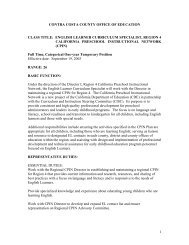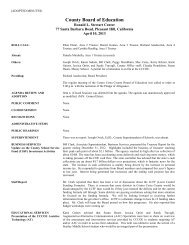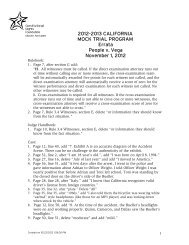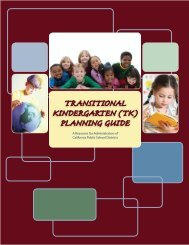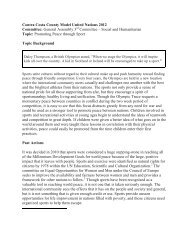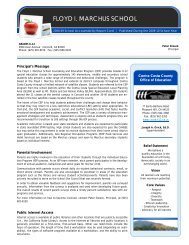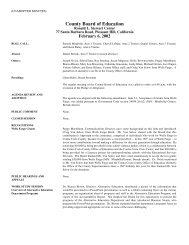You also want an ePaper? Increase the reach of your titles
YUMPU automatically turns print PDFs into web optimized ePapers that Google loves.
Another shift is a more overt emphasis on shared responsibility for students’ literacy development. This <br />
was already part of California’s ELA and subject frameworks. These standards make the shared <br />
responsibility more overt. Our current History and Science frameworks already include many of the <br />
standards – so it is not really new to teach reading and writing in the subject areas. In fact, History and <br />
Science materials were recently adopted, so many districts have instructional materials in these content <br />
areas that do a good job of teaching and incorporating reading and writing. <br />
Instructor Note: Paraphrase the following paragraphs from the Introduction p. 2. <br />
The Standards insist that instruction in reading, writing, speaking, listening, and language be a shared <br />
responsibility within the school. The K–5 standards include expectations for reading, writing, speaking, <br />
listening, and language applicable to a range of subjects, including but not limited to ELA. The grades 6–<br />
12 standards are divided into two sections, one for ELA and the other for history/social studies, science, <br />
and technical subjects. This division reflects the unique, time‐honored place of ELA teachers in <br />
developing students’ literacy skills while at the same time recognizing that teachers in other areas must <br />
have a role in this development as well. <br />
Part of the motivation behind the interdisciplinary approach to literacy promulgated by the Standards is <br />
extensive research establishing the need for college and career ready students to be proficient in reading <br />
complex informational text independently in a variety of content areas. Most of the required reading in <br />
college and workforce training programs is informational in structure and challenging in content; <br />
postsecondary education programs typically provide students with both a higher volume of such reading <br />
than is generally required in K–12 schools and comparatively little scaffolding. <br />
Let’s take a look at who is responsible for which portion of the Standards. <br />
• In K‐5, since most of the instruction students receive comes from one teacher, there is a single set of <br />
grade‐specific standards for which the classroom teacher is responsible. <br />
• In grades 6‐12, there is one set of standards for which ELA teachers are responsible. <br />
• Another set of literacy standards for history/social studies, science, and technical subjects includes <br />
standards for which responsibility must be shared between ELA teachers and teachers in other content <br />
areas. <br />
• The literacy standards in history/social studies, science, and technical subjects are meant to <br />
complement rather than supplant content standards in those disciplines; the point is that there are <br />
discipline‐specific literacy skills that should be addressed in other content areas. <br />
23




